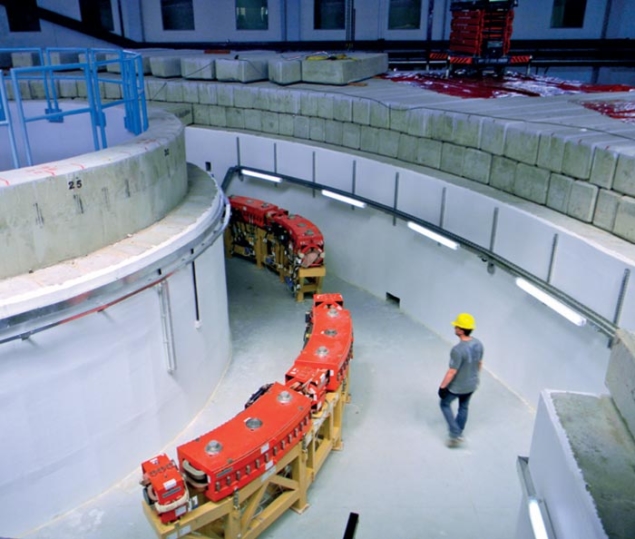
Image credit: SESAME.
The European Commission (EC) and CERN have agreed to support the construction of the Synchrotron-light for Experimental Science and Applications in the Middle East (SESAME) facility, one of the most ambitious research initiatives in the Middle East. SESAME is a unique joint venture based in Jordan that brings together scientists from its members Bahrain, Cyprus, Egypt, Iran, Israel, Jordan, Pakistan, the Palestinian Authority and Turkey.
The SESAME synchrotron light source will allow researchers from the region to investigate the properties of advanced materials, biological processes and cultural artefacts. Alongside its scientific goals, the project aims to promote peace in the region through scientific co-operation.
Through an agreement that was announced on 28 May, the EC will contribute €5 million, allowing CERN – working with SESAME – to supply SESAME with magnets for a new electron storage ring at the heart of the facility. This will pave the way for commissioning to begin in 2015. In addition, the EC has already contributed more than €3 million to the project through the European Neighbourhood and Partnership Instrument and by supporting the SESAME networking, computing and data-handling systems.
Construction started in 2003. Like CERN, SESAME was established under the auspices of UNESCO. A key impetus to launch was the donation of components from the BESSY laboratory in Berlin. Since then, a growing community of local scientists has been working closely with partner facilities from around the world and several other laboratories have contributed to making the SESAME facility world-class.








